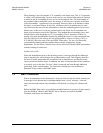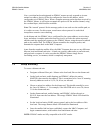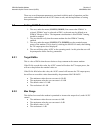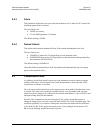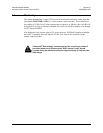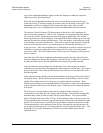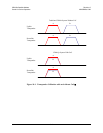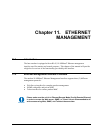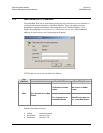
CDM-Qx Satellite Modem Revision 5
Carrier-in-Carrier Operation MN/CDMQx.IOM
9–2
copy of the outbound modulators signal in time and frequency within the composite
signal received by the demodulator.
When the search algorithm has found the carrier, the modem front panel will report
search successful! It will also display an accurate value for the delay of the signal. The
demodulator will then reconfigure itself to match the delay value, cancel out the
interfering carrier (user’s outbound) then lock to and demodulate the desired carrier.
The modem is like all Comtech EF Data modems in that it has a full compliment of
receive monitored parameters. But for CnC operation a new parameter has been added.
To access this feature, change the menu from config Rx to monitor Rx, CnC and the
following parameters will be displayed. The normal BER, Eb/No and the new is the ratio
between the interferer and the desired carriers. The value display is the difference in dB
of the interferer over the desired carrier. This value is signed as the interferer (which the
user side of the link has control over) can be greater or less than the desired you are
trying to receive. This is an invaluable piece of information as with two carriers on top of
each other it is otherwise impossible to accurately tell if one side or the other should
experience a fade. The CnC monitor menu will also report the frequency offset between
the two carriers.
Once this side of the link is configured and running properly, the other side of the link
must be configured so that the Rx frequency is the same as the Tx and CnC is turned on.
At this point both sides of the link should be locked and passing traffic normally.
Once the links have been configured such that the Eb/No values with good weather
conditions are such that there is an appropriate fade margin, record the ratio value so that
between the Eb/No value of the desired and the ratio value the user can determine if the
link has degraded.
If the outbound carrier should go down the demodulator may drop sync but will relock to
the desired carrier. When the outbound carrier returns the demod may be able to relock
rapidly if the outage was brief or it may have to perform another search first. If the
desired carrier should go down the demodulator will continue to cancel the outbound but
will be unlocked with respect to the desired carrier. When the carrier returns the demod
will relock.
While there are several parameters that can be configured when using CnC, it is
recommend to leave them set to the factory default settings. These include changing the
minimum delay value (in milli seconds) for the search function. The typical satellite
delay will range from about 230 to 270 ms. If the minimum value is increase to say 200
ms the acquisition time will not be significantly improved and if the unit should be tested
at the IF level in the future it would not lock as the delay would be in the micro seconds.
The maximum delay can be decreased from 290 ms, but again the acquisition time will
not be significantly improved. The other parameter is the reacquisition delay value. This
determines how long the demodulator will wait to perform another search for the
outbound carrier.



